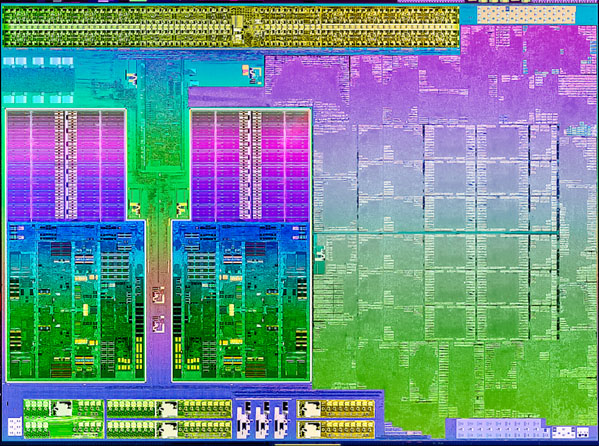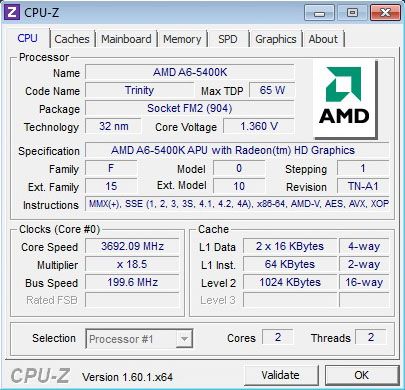AMD Trinity On The Desktop: A10, A8, And A6 Get Benchmarked!
Trinity: Coming Soon To A Desktop Near You
This story, a preview of AMD's Trinity-based A10, A8, and A6 families, was originally published on June 14, 2012. It was not condoned, supported or sponsored in any way by AMD. The piece appears here, unchanged, with the same information presented nearly four months ago.
About a month ago, AMD took the wraps off of its Trinity-based APU. Hotly-anticipated, all eyes turned to see how the second-generation amalgamation of x86 cores and graphics processing resources performed. Why were so many enthusiasts interested in a decidedly mainstream piece of hardware?
Let’s just say Trinity’s composition is…unique.
AMD’s new APU is the first component sporting its Piledriver x86 architecture. After the disappointment that was Bulldozer, which we first evaluated in FX-8150, hopes had to be pinned on a follow-up. And Trinity has it. Back when we were first briefed on Bulldozer, AMD showed us roadmaps with a new architectural revision pushing 10-15%-higher performance each year. Now, power users want to know if Trinity’s Piledriver-based cores deliver on the company's promise.
Moreover, Trinity employs a newer graphics architecture than Llano. Instead of the VLIW5 arrangement, which also sat at the heart of Radeon HD 6800 and older GPUs, it utilizes the VLIW4 design that went into AMD’s Radeon HD 6900-series cards. Everything after the 6900s swapped over to Graphics Core Next, so VLIW4 isn’t a very prolific implementation. But it’s supposed to be more efficient. Naturally, then, we all want to see how Trinity’s on-die GPU compares to what came before.
We’re Going Mobile, Mav
There was just one problem with last month’s introduction: it only covered the mobile implementation of Trinity.
Get Tom's Hardware's best news and in-depth reviews, straight to your inbox.
That was the right move for AMD, no question. It doesn’t take a page of analysis to figure out how putting a CPU and GPU on the same piece of silicon can help address the physical, thermal, and power-oriented issues that laptop manufacturers have to overcome as they design new products.
But enthusiasts were left with questions. Most obviously, how might Piledriver be expected to behave in an FX-branded device? Does it ameliorate Bulldozer’s weaknesses? Given a similar 100 W ceiling on the desktop and the same 32 nm manufacturing process, does Piledriver/VLIW4 deliver an appreciable benefit compared to Stars/VLIW5?
Answering those questions requires the freedom to tweak and tune around in a motherboard BIOS. So, we got our hands on a trio of Trinity-based desktop APUs and set out to preview their performance.
I say preview because hardware based on the Trinity design isn’t going to be available in the channel until later this year. It has been reported that there are still a lot of Llano-based APUs out there, which AMD needs to sell off. So, it’s making Trinity available to OEMs designing notebooks and desktops in time for back-to-school. But you won’t be able to buy these chips for a while. Moreover, the motherboards supporting them with Socket FM2 interfaces aren’t fully-baked, either.
Meet The Desktop Trinity Line-Up
| Header Cell - Column 0 | Radeon HD | GPU (MHz) | Shaders | TDP | Cores | Base CPU (GHz) | Turbo Core (GHz) | L2 Cache | Unlocked |
|---|---|---|---|---|---|---|---|---|---|
| A10-5800K | 7660D | 800 | 384 | 100 W | 4 | 3.8 | 4.2 | 4 MB | Yes |
| A10-5700 | 7660D | 760 | 384 | 65 W | 4 | 3.4 | 4.0 | 4 MB | No |
| A8-5600K | 7560D | 760 | 256 | 100 W | 4 | 3.6 | 3.9 | 4 MB | Yes |
| A8-5500 | 7560D | 760 | 256 | 65 W | 4 | 3.2 | 3.7 | 4 MB | No |
| A6-5400K | 7540D | Row 4 - Cell 2 | 192 | 65 W | 2 | 3.6 | 3.8 | 1 MB | Yes |
| A4-5300 | 7480D | Row 5 - Cell 2 | 128 | 65 W | 2 | Row 5 - Cell 6 | Row 5 - Cell 7 | 1 MB | No |
Of the six models purportedly planned, we have three of them: the A10-5800K, the A8-5600K, and the A6-5400K.
The A10-5800K will be AMD’s flagship. A pair of Piledriver modules technically makes this a quad-core APU, though, as we know, each module shares certain resources. The top-end A10 operates at a 3.8 GHz base clock that scales up to 4.2 GHz via Turbo Core, though our sample spent most of its time at 4 GHz (an intermediate P-state). Each of the -5800K’s Piledriver modules has its own 2 MB shared L2 cache, adding up to 4 MB across the chip. And AMD arms its two A10 APUs with Radeon HD 7660D graphics—a 384-shader engine operating at 800 MHz on the -5800K (and, reportedly, 760 MHz on the -5700).
A small step down, the A8-5600K also leverages two Piledriver modules and 4 MB of total L2 cache (none of the Trinity-based APUs have L3). Its base frequency is 3.6 GHz with a 3.9 GHz Turbo Core ceiling. Both of the A8s come with Radeon HD 7560D graphics (256 shaders running at 760 MHz).
AMD’s A6-5400K represents a more significant departure from the other K-series SKUs. To begin, it bears a 65 W TDP, instead of 100 W. It’s also a single-module APU armed with two integer cores and a single floating-point unit. And instead of a shared 2 MB L2 cache, the -5400K is trimmed down to 1 MB of shared space. Radeon HD 7540D graphics are composed of 192 shader cores operating at an undisclosed frequency.
Current page: Trinity: Coming Soon To A Desktop Near You
Next Page Piledriver: Half Of The Trinity Story-
Youngmind This is so exciting! AMD is probably going to dominate the lower-end and give the poor gamers like me more bang-for-buck as their IGP get better and better :)!Reply -
dudewitbow depending on how its priced, its a really nice alternative for bare budget gaming that opens up a quad core as wellReply -
So this means that a 'Crossfired' Trinity APU would beat ANY similarly-priced Intel (CPU+discrete GPU) ???Reply
Well at least in gaming -
dudewitbow JiggerByteSo this means that a 'Crossfired' Trinity APU would beat ANY similarly-priced Intel (CPU+discrete GPU) ???Well at least in gamingReply
really the question is what gpus are able to hybrid crossfire with it. the information was never public. not all amd gpus will hybrid crossfire with it. -
Well, where are the Ivy/Sandy i5's and i3's???Reply
Once they are pitted against each other, that will be A TRUE measure of the APU Trinity's marketability -
mayankleoboy1 in the OpenCL Winzip benchmark, when openCL is enabled the workload is done only by the iGPU or the CPU as well ?Reply
i mean what is the processor usage during the benchmark ? are all CPU cores used? or only one? -
cangelini mayankleoboy1in the OpenCL Winzip benchmark, when openCL is enabled the workload is done only by the iGPU or the CPU as well ?i mean what is the processor usage during the benchmark ? are all CPU cores used? or only one?Good question--I'll take a look for you.Reply




